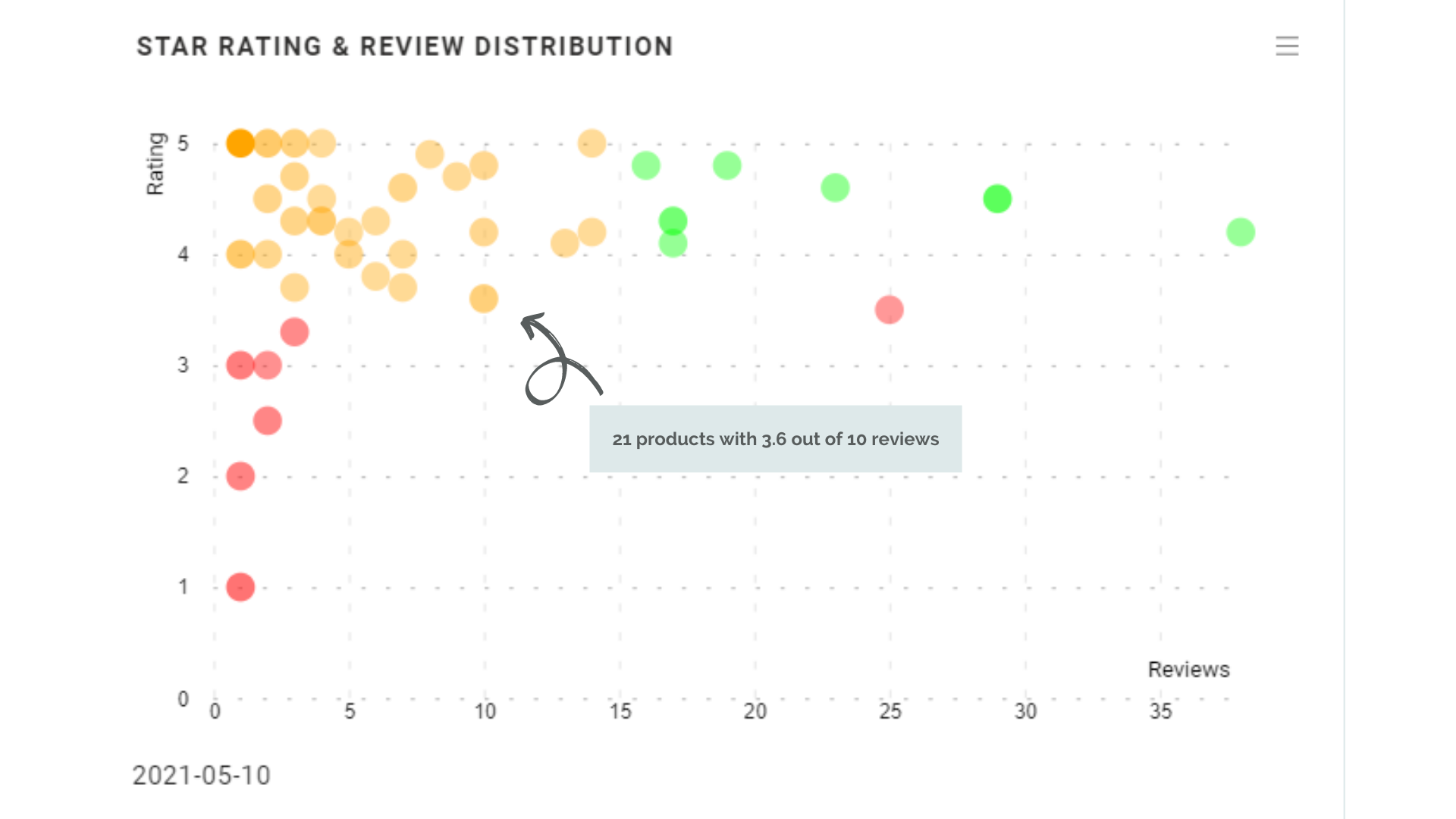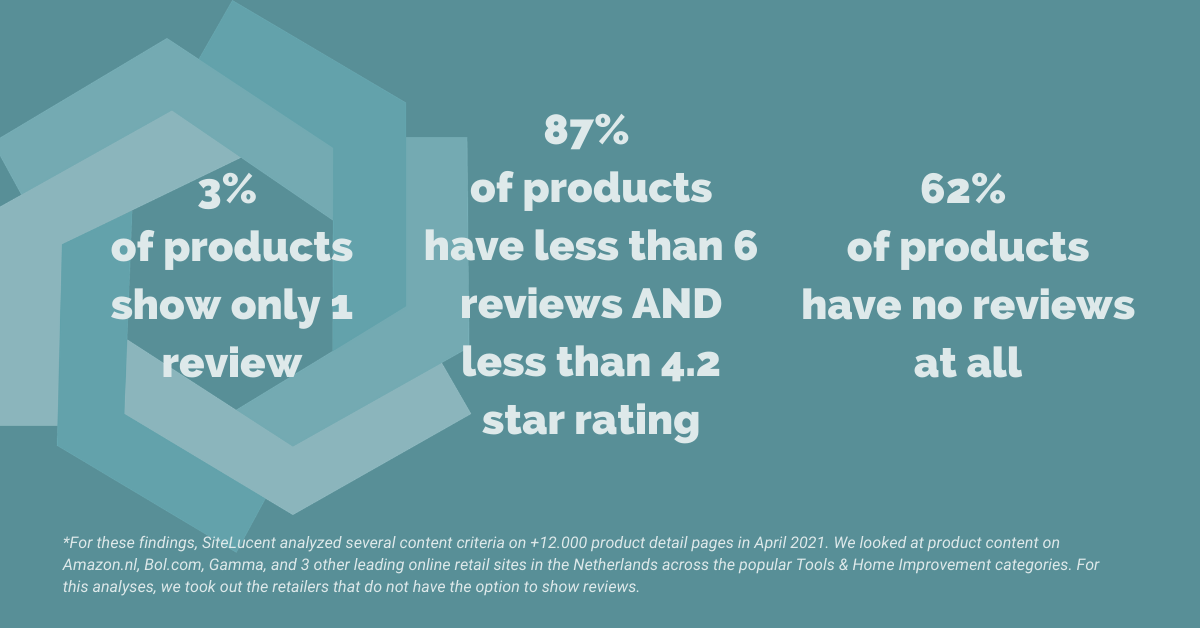Monitoring Ratings & Reviews on the digital shelf helps you identify issues with your products and product content and gives you keyword ideas- in the customer's language, which improves the findability of your products.
In part 1 of my triptych blog series about optimizing the digital shelf, I touched on minimizing online stockouts, and in part 2 on optimizing product content on the digital shelf. In todays' last part, I'll talk about how you can monitor and generate product reviews and utilize this valuable feedback.
Monitoring Customer Feedback on the Digital Shelf
Product reviews can make your products stand out, give shoppers confidence in your brand, and eventually influence shoppers' purchasing decisions. 81% of all online purchases occur on product pages with ratings and reviews content.
High- & Low-Involvement Purchase Decisions
According to PowerReviews Centennial Shopper Study are, after price, reviews the second-most important factor to customers making a purchase decision. Positive and realistic reviews can significantly impact someone's decision to buy a product or not, but for certain products, customer feedback is more important than for others.
We can distinguish between high-involvement decisions and low-involvement decisions. Product reviews are extra powerful for high-involvement buying decisions since these decisions involve research, and shoppers are more personally involved. Having more information via reviews helps decrease risk - whether it is a financial risk, social risk, or psychological risk. Also, in the early stage of a product, consumers pay more attention to online reviews.
Analyse, Set KPIs, & Zoom In
- Assuming a shopper wants more information when dealing with a high-involvement purchase decision, it's helpful to focus on new, higher-priced, and safety and health-related products first. Map a set of products you want to start optimizing.
- Then define the number of reviews and star ratings your products currently have for the products and sales channels selected by you. Review monitoring software such as SiteLucent can help you with this job.
- Set your KPIs: Map the minimal number of reviews you aim for these products to have and the minimal star rating, using content quality scorecards such as SiteLucents' DCC score.
- With all the requirements and KPIs set in place, you can start zooming in on underperforming products - Reviews with low numbers of reviews or those with 1- or 2-star ratings. The image below shows that it becomes easier to get a clear overview of your products' star rating & review distribution when using scatter plots.

- Use language used by your customers. Shape content to meet the buying needs of the consumer on each specific shopping channel. Think of essential retailer-specific keywords that your product page should contain. Try to match the keywords with the language of the target group of a specific retailer.
- Fresh review content is super important to improve search rankings, both on Google shopping and on the retailer's shelf.
Utilize Negative Reviews
It's never fun to hear negative feedback about your products, but negative reviews are inevitable. Turn them into something positive:
- Negative reviews can help you identify issues with your products or services that you may not have known about otherwise.
- Negative reviews can help a shopper make a more informed purchase decision.
- Both points mentioned above can help you lower return rates.
- One and two-star reviews add authenticity to your content and let shoppers know you're a brand they can trust. Shoppers perceive a perfect 5 star as too good to be true.
Research of PowerReviews and Northwestern University has shown that purchase probability peaks when a product's average star rating is between 4.2 and 4.5. Once you've monitored and analyzed your products' reviews with the help of a review monitoring tool, you know which underperforming products you need to take action on.
There can be many reasons why customers leave negative reviews, but the buyer's expectation likely does not match reality. Dive into the review texts to find out if something went wrong and if you can utilize valuable feedback to improve.

Maybe product content holds inaccurate info, and it is an easy fix. If the reviews indicate that something is wrong with the product itself, you can leverage that information for product development. Product development might be more of a long-term goal, but constructive feedback from buyers is precious.
How to Generate Product Reviews?
The first step to maximizing review collection is asking. Reach out to buyers and convince them to leave a review. The most effective way is sending review request emails that are on brand, simple, and to the point.
To define the right questions, monitoring and analyzing reviews beforehand is crucial. This way, you can ask questions that you know will address key known customer issues.
The timing of sending a review request email should be between 7 and 21 days after purchase, depending on the product type. Keep in mind that you can't ask for a review right away. Customers need time to receive the product and try it out.
If appropriate for your brand, incorporate an incentive in one of your review submission request emails:
- Send customers who bought your product a coupon to make leaving a review about their product experience more attractive.
- Set up a review and win- campaign. Spread it via email and social media channels.
- If you are selling a completely new product or seasonal product, you can think of running a product sampling campaign, sending out samples to the target group who agree to write a review to boost reviews.
Digital Shelf Optimization
Winning on the digital shelf is a challenging and time-consuming process. Your products first need to be visible and findable. Then you need to attract and convince shoppers with complete, correct, and attractive product copy on detail pages, including reviews. Keeping your products visible and brand-compliant on each channel is a time-consuming and ongoing process. However, using Digital Shelf Monitoring Tools can make the job easier for you and your team.
Download our free Guide to Digital Shelf Optimization
.png?width=680&name=Guide%20Digital%20Shelf%20Optimisation%20-%20LinkedIn%20Ads%20Graphic%20(4).png)